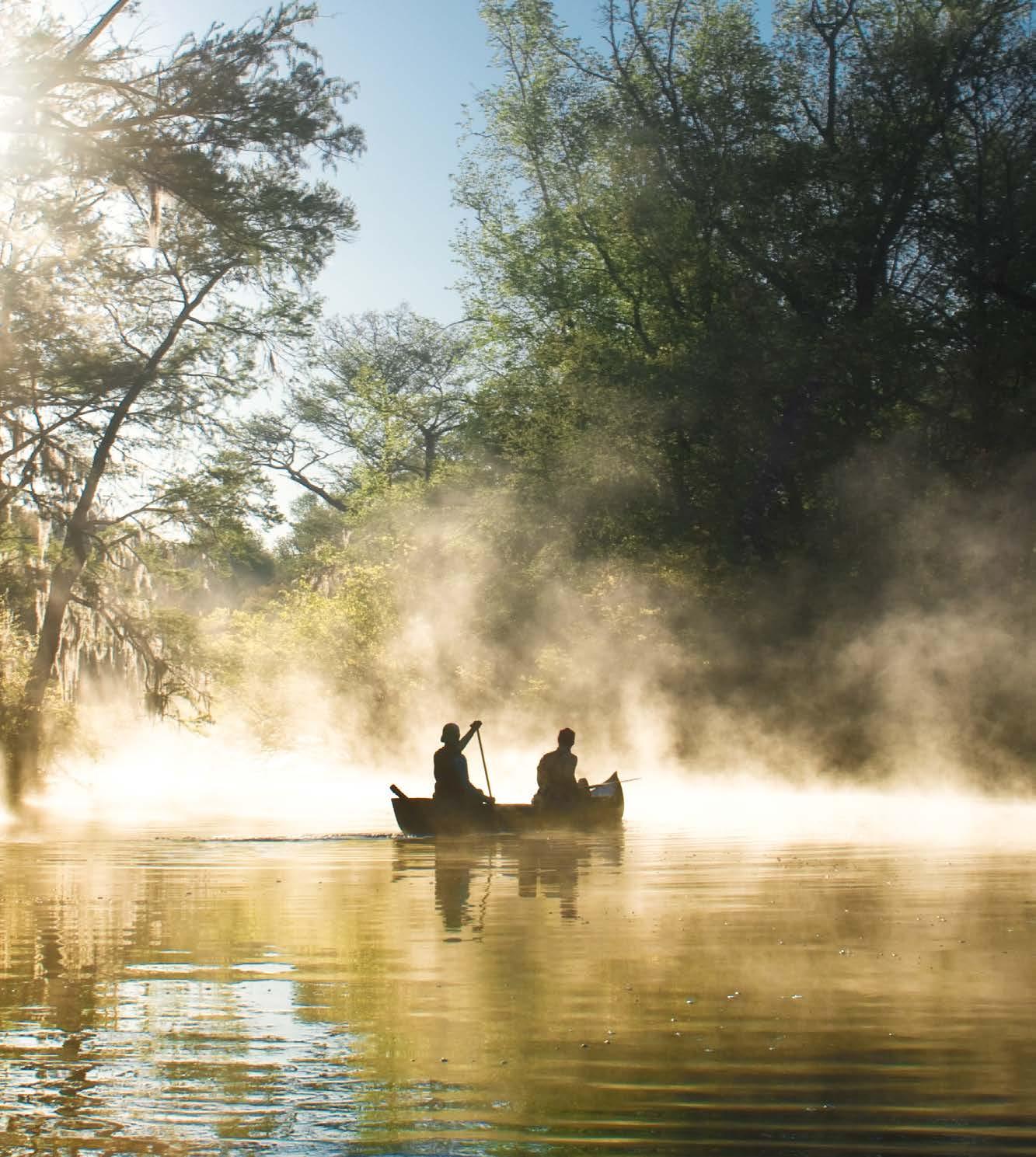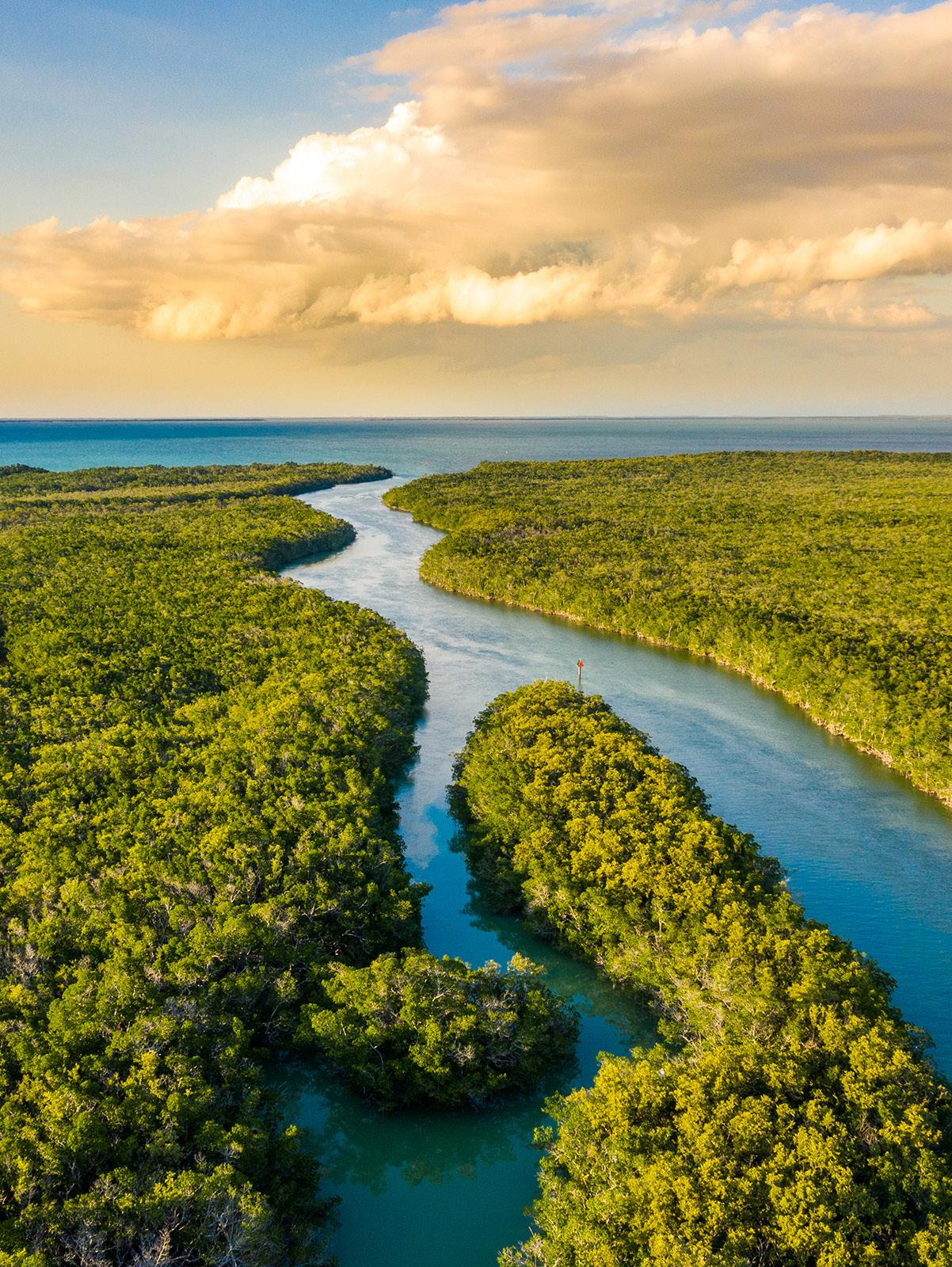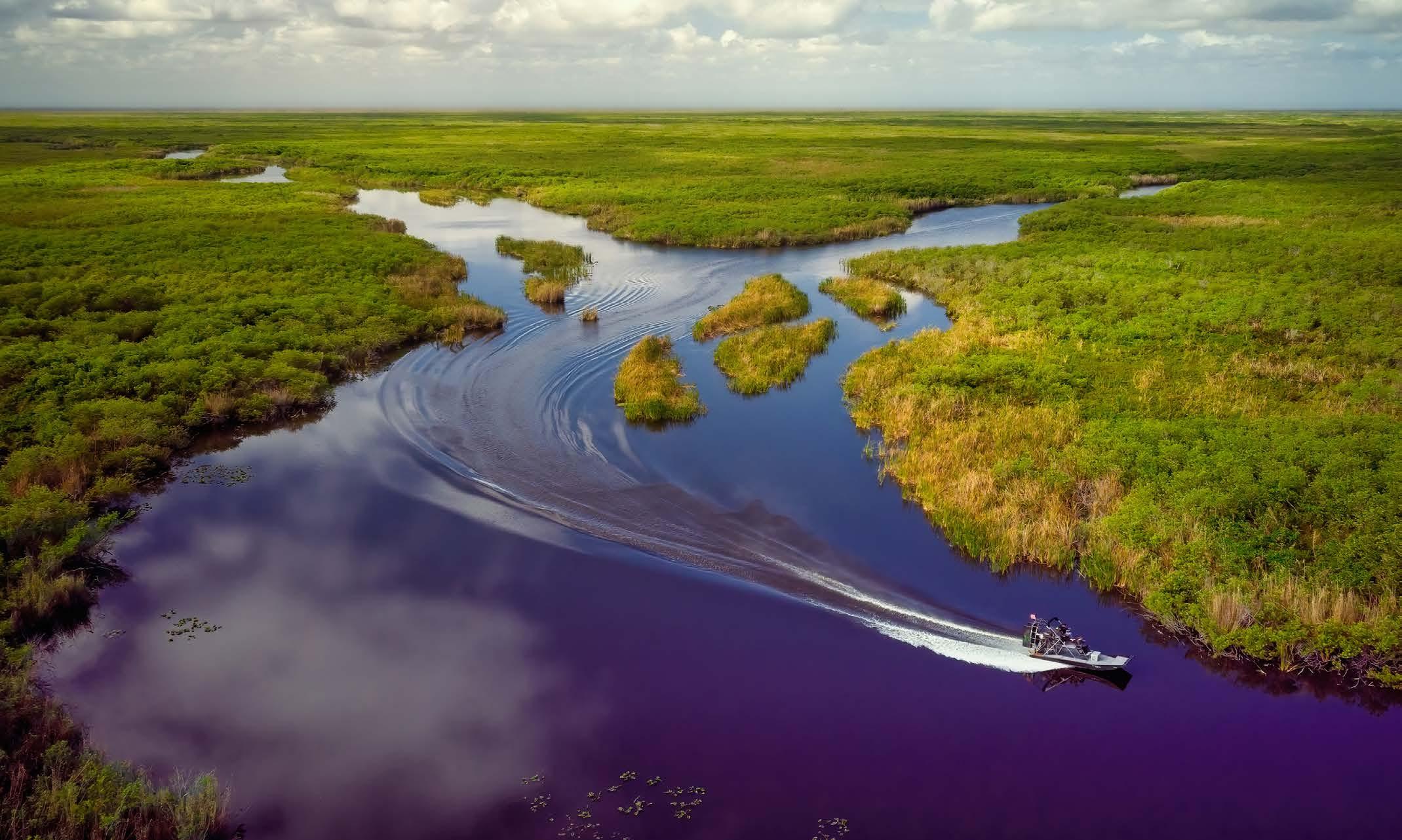
4 minute read
Everglades National Park
The nation’s largest subtropical wilderness, Everglades National Park is as beautiful as it is foreboding. A UNESCO World Heritage Site and International Biosphere Reserve, it’s also designated as a Wetland of International Importance and is protected under the Cartagena Treaty.
An integral habitat for several rare and endangered species, its swamps, tropical forests and waterways are home to manatees, American crocodiles and elusive Florida panthers, too.
Historically speaking, the Everglades served as hunting grounds for many over time, including Native Americans and, later, Anglo-American settlers (or “Gladesmen”), who relied on its abundant natural resources. Dubbed the River of Grass on account of Marjory Douglas’s novel, “The Everglades: River of Grass,” it has been described as such ever since.
The Flora And Fauna
A key habitat for migratory birds, the Everglades are also a nursery for nearly 300 species of fish, as well as wading birds. Here, too, are 50 distinct kinds of reptiles, including the American alligator, American crocodile, endangered green turtle, Atlantic leatherback, Atlantic hawksbill, Atlantic ridley and venomous eastern indigo snake.
Set at the confluence of temperate North America and the tropical Caribbean, the park is rich with flora from both, including endemic and legally protected species. Among its ever-evolving collection of plants are 164 identified plant species, 47 of which are threatened, 113 of which are endangered and four of which have been identified as commercially exploited.
From grasses and sedges to moisture-loving orchids, ferns, trees, shrubs and a year-round proliferation of wildflowers, Everglades National Park is filled with intrigue.
The dry season — and more pleasant weather — occurs in winter, making it the best time to view wildlife in the park. Because standing water levels are low, wildlife congregate at central water locations. Shark Valley, the Anhinga Trail (at Royal Palm) and Eco Pond are ideal for observing alligators, wading birds and other freshwater wildlife.
The Hikes, Drives and Viewpoints
Anhinga Trail
If you walk one trail, make it the .8mile Anhinga Trail, a paved walkway and boardwalk that starts at the Royal Palm Visitor Center and offers frequent sightings of alligators, anhingas, turtles, herons and egrets, to name a few.

The Weather
Two seasons — wet and dry — occur in South Florida, leading to hot, muggy, rainy summers with frequent thunderstorms and mild, dry, temperate winters, with periods of cool air.
Come prepared, bring plenty of water and be sure to check out the following for current weather conditions prior to exploring the park.
Flamingo Campground and Visitor Center
Shark Valley Entrance - Shark Valley Visitor Center and Shark Valley Loop Road
Everglades City Entrance - Gulf Coast Visitor Center
Homestead Entrance - Ernest F. Coe Visitor Center and Royal Palm
Wherever you’re headed, visit the park website beforehand so you’re aware of conditions.
Shark Valley Tram Trail
The Shark Valley Tram Trail, a 15.8mile loop, journeys through the park’s freshwater marsh, with the option to explore on foot, bike or guided tram.
Gumbo Limbo Trail
Absorb the Everglades’ lush, forested beauty on the .5-mile, paved Gumbo Limbo Trail, taking time to appreciate its namesake trees and other verdant, tropical flora.

Tamiami Trail
Drive Tamiami Trail, which links Miami and Florida’s west coast, keeping watch for alligators in cypress swamps and marveling at the Everglades’ scenery enroute.
Loop Road
Parallel to Tamimai Trail, the 24-mile Loop Road is teeming with wildlife. It’s an opportunity to putter through South Florida’s undeveloped center.
Turner River, Upper Wagon Wheel and Birdon Road Scenic Drive
To observe and fully appreciate the park’s open prairies and areas populated by wading birds, hop on Turner River, Upper Wagon Wheel and Birdon Road Scenic Drive, a 20-mile loop.
About The Park
Location - Miami-Dade, Monroe, & Collier counties, Florida
Established - December 6, 1947
Area - 1,509,000 acres










